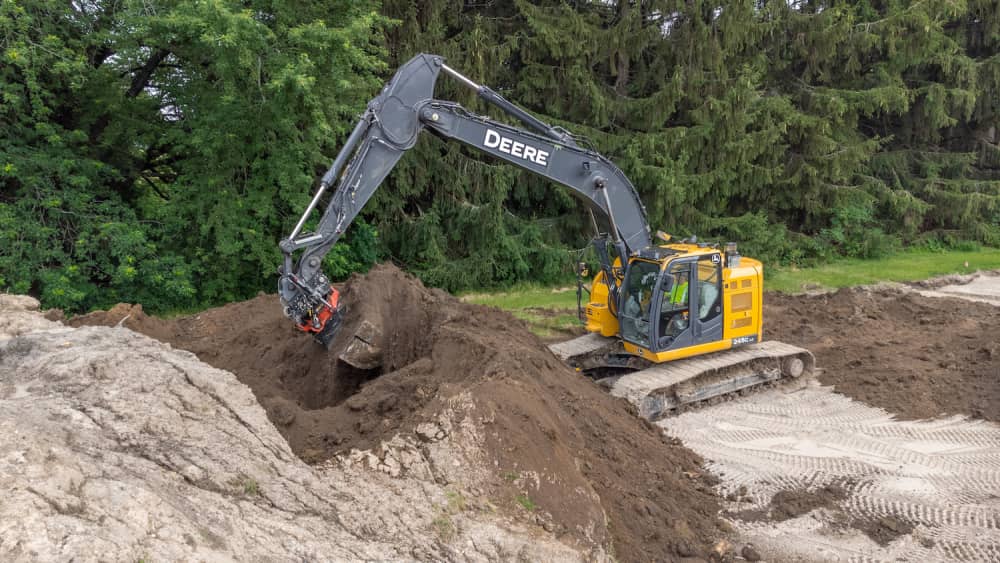Stability and balance are intrinsic to the construction industry. It’s why we build deep foundations, drive in specific ways up and down hills and have certain rules about how we transport materials. Read on to learn what the center of gravity is and why it matters in construction.
How Does Gravity Work?
Gravity is a force on the earth - or other plants - that draws objects towards its center. This force is what keeps planets orbiting and us from falling off our round planet. It makes balls fall when they are thrown upwards. It is what made the apple fall and hit Newton on the head, inspiring him to discover why apples fell to the ground in the first place.
What Is the Center of Gravity?
The center of gravity refers to the point in an object where gravity appears to act. Gravity is always present in an object. When an object is dropped, moved, tilted, shifted or lifted, the center of gravity is what is constantly trying to pull it back to earth. This center is determined by weight, length and width of an object.
How Does Center of Gravity Work?
Because the weight of an object is concentrated and balanced at the center of gravity, an object hanging will be shifted and tilted until the gravitational force pulls that point straight down to earth.
The existence of a “center” of gravity is visible when you drop an object that is top or bottom-heavy, or with an uneven distribution of weight. The object will spin and shift so that the center point of the object is what is drawn down to the earth.
Your Own Center of Gravity: Try It Now!
You can try it yourself right now. When you stand up, your gravitational pull runs right through your body and your feet. If you stand with your feet close together and lean forward, you’ll feel ready to fall. If you step a foot forward, you’ll be able to lean further because that base is strong enough to support the shifting center of gravity. Lean forward enough, and you’ll feel your one leg start to rise up behind you. The planted foot becomes the access in which gravity pulls down through you while your torso and extended leg act as balances of weight.
How Do Falling and Toppling Relate to the Center of Gravity
With a force pulling straight down and through an object, the base of that object needs to be able to support the gravitational force. If the center falls outside of this base, then the pull can start to force the object off balance.
The leaning tower of Pisa is perhaps the most famous tilted building. The center of gravity does not fall outside of the base of the tower. This is what allows it to lean without ever falling.
The Importance of Load Maximums
There are specific equations used to determine how much weight and at what distance that weight can be lifted while still maintaining a stable center of gravity. This is one example of why center of gravity and load restrictions are so important in the construction industry. Crane weights, especially, are calculated with center of gravity and lifting capacity in mind.
Since weight and size both contribute to this magic point in an object, they both must be respected in order to keep machines functioning as they should. The distribution of mass can look wonky if you aren’t sure how a type of material or machine is weighed or if the load is an irregularly shaped object. Finding the center can be more difficult than you would think. If you aren’t sure of the proper way to load a type of material, ask for help. It may sound silly but improper loading can be extremely dangerous.
This diagram from Lift-It demonstrates how loading and center of gravity go hand in hand.
A General Rule with the Center of Gravity
The lower an object's center of gravity is to the ground, the more stable that object is. This is why wheel loaders, skid steers and other bucket machines drive with their loads close to the ground. The weight distribution remains balanced and stable with a low center of gravity because the force is pulling right down. Lifting that load up into the sky raises the machine's center of gravity, making it more difficult to stabilize itself if it were to hit a bump or to sway because it becomes top-heavy.
This concept is used even by tightrope walkers. Lowering of the hips and a slight bend in the knee helps to bring the walker’s center of gravity closer to the wire.
Center of Gravity In Construction
Center of gravity plays a major role in the construction industry, especially because construction machines are often moving heavy loads, lifting large objects or are building projects where stability and balance are key. Although building stability is determined at the design stage, it’s important for operators to understand the basics for safety.
As explored above, crane loaders and equipment operators rely on this concept to ensure load security and prevent tipping accidents. When driving an excavator or other type of machine on a slope, this concept is very important. Overestimation of balance can lead to tipping accidents.
The Center of Gravity: Safety & Stability
Next time you’re loading material onto a crane, lifting a box or operating a wheel loader, think about center of gravity. Do you know what the center of gravity is for your machine? Are you aware of the load capacity of your equipment? For safety and stability, think about this force next time you’re on the job.

